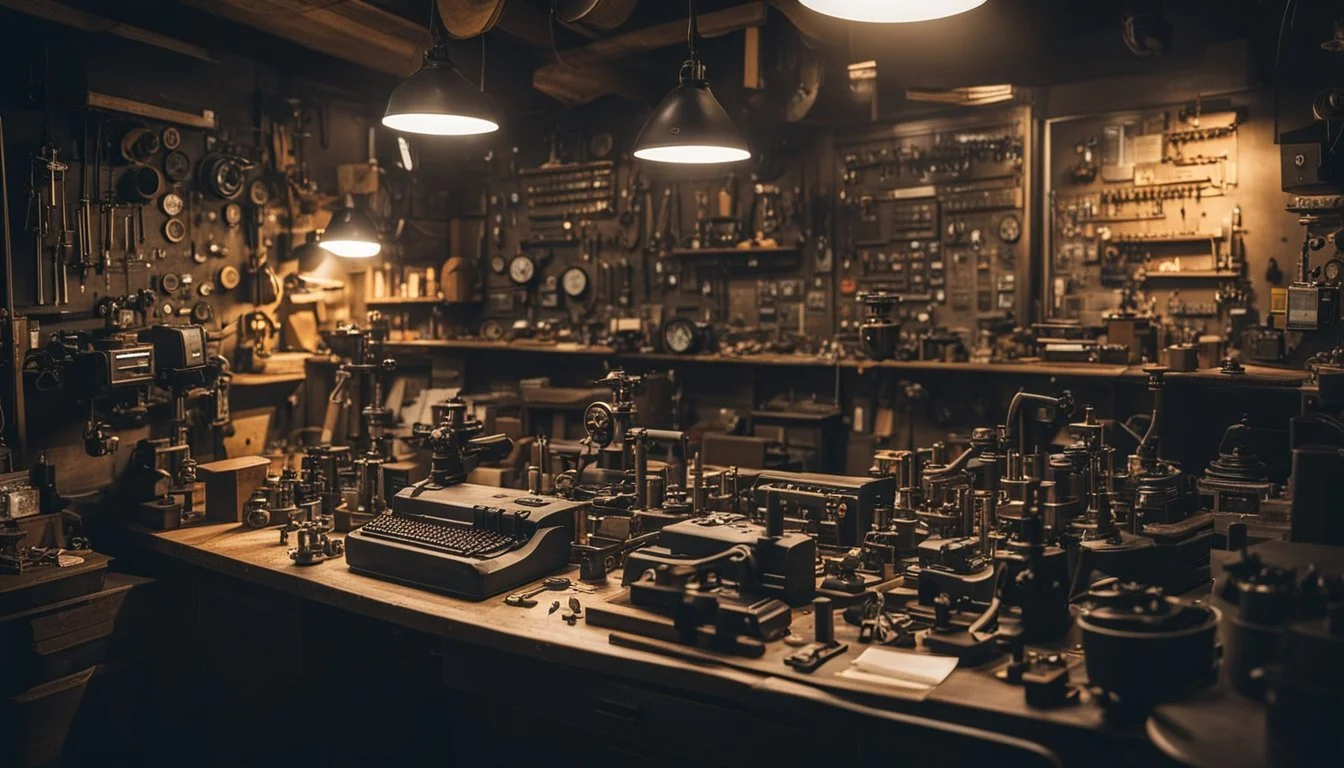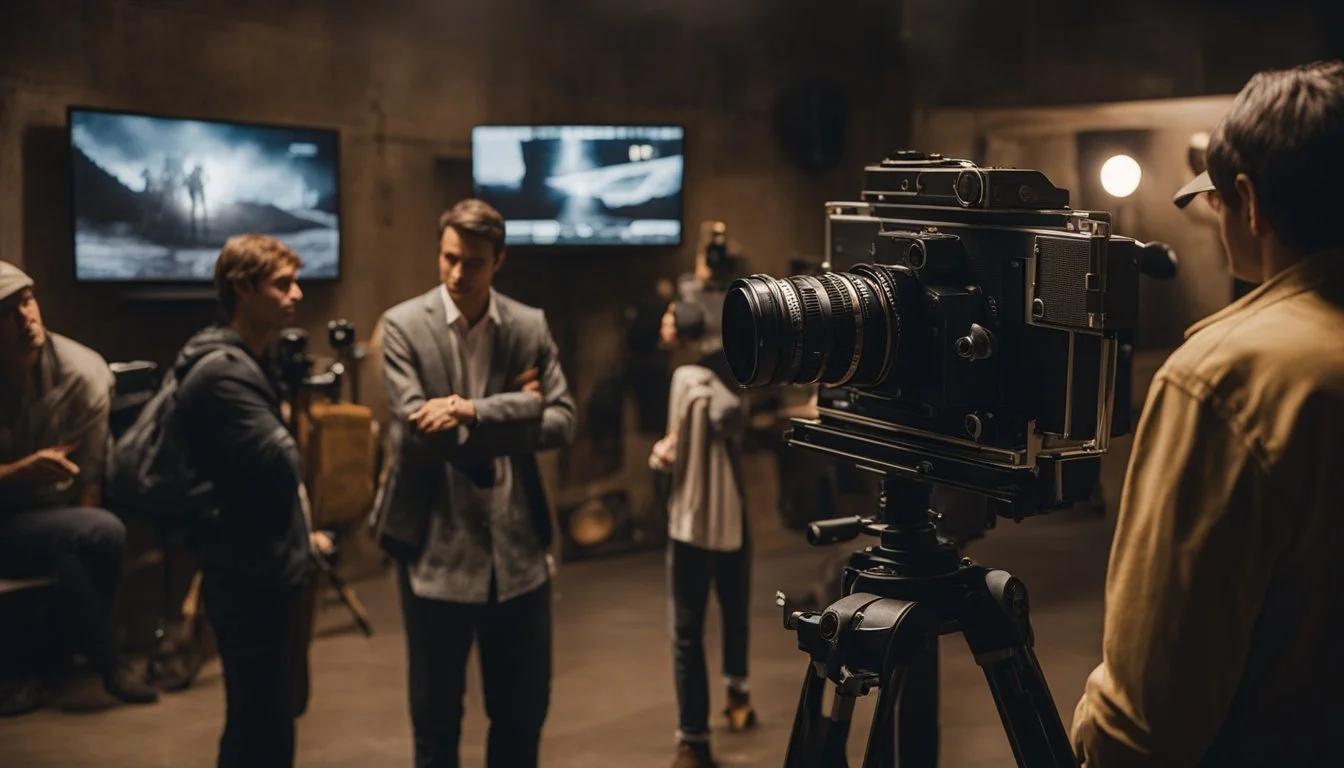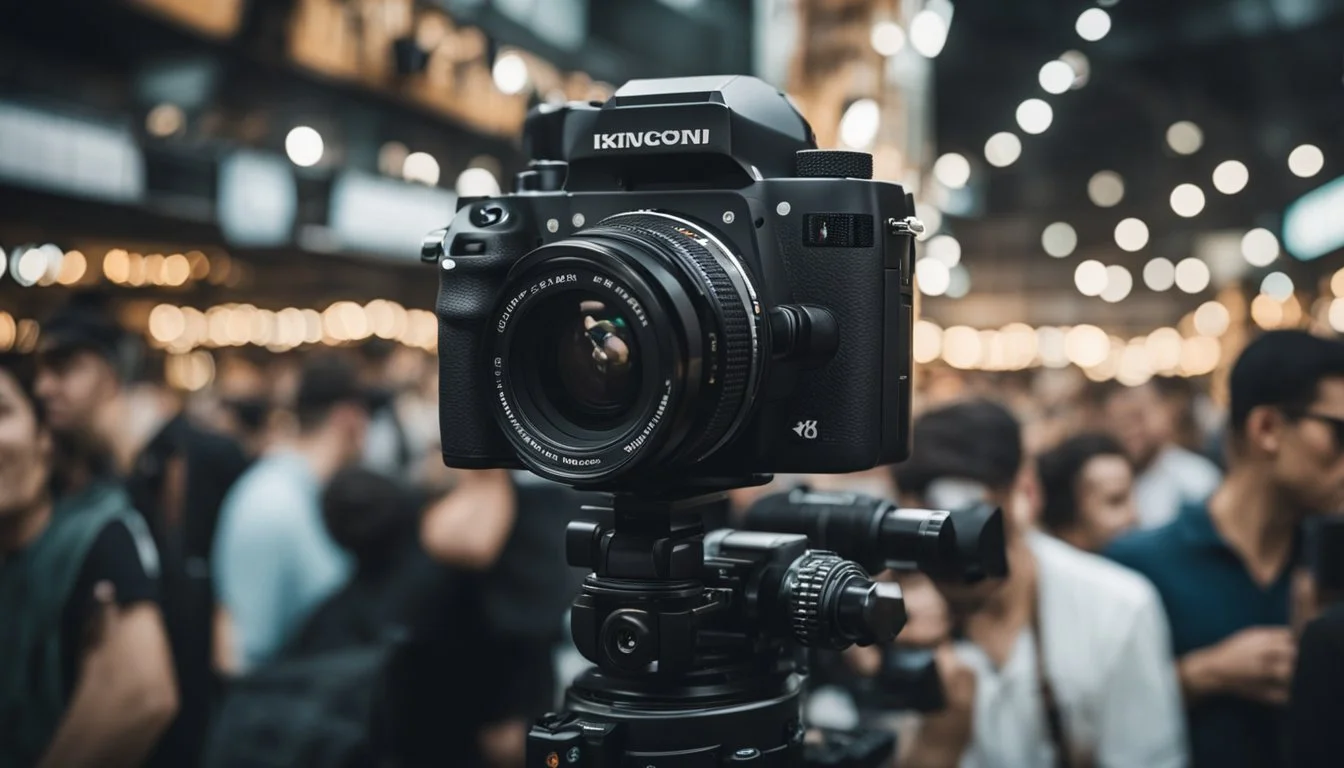Chris Hegedus: Unveiling the Inner Workings of Subcultures and their Impact
Chris Hegedus, a name synonymous with incisive documentary filmmaking, has long been passionate about uncovering the hidden layers of subcultures. Known for bringing compelling narratives to light, Hegedus delves into the intricate dynamics that define distinct social groups. Her work offers an unparalleled examination of the elements that shape and sustain these communities.
Drawing from seminal studies in subcultural theory, Hegedus provides a window into the motivations and identities that these social collectives form. Her insightful documentaries reveal how subcultures engage with broader societal structures, challenging normative boundaries and offering a fresh perspective on human interaction.
By exploring these marginalized yet vibrant communities, Hegedus amplifies voices often overshadowed by mainstream culture. The depth of her analysis encourages a deeper appreciation for the diversity within societal landscapes, making her documentaries essential viewing for anyone seeking to understand the complexities of group identity and cultural expression.
The Life and Career of Chris Hegedus
Chris Hegedus, born on April 23, 1952, is a highly respected documentary filmmaker.
She co-founded Pennebaker Hegedus Films with her husband, D.A. Pennebaker, contributing to numerous influential documentaries.
Hegedus’s career spans over four decades, showcasing her talents as a director, cinematographer, and editor.
Her notable works include The War Room, which earned an Academy Award nomination for its behind-the-scenes look at Bill Clinton's 1992 presidential campaign.
In 2001, she won the Directors Guild of America Award for Startup.com, an intimate documentary about the rise and fall of an internet startup during the dot-com boom.
Some of her other acclaimed films include Elaine Stritch at Liberty, Moon Over Broadway, Kings of Pastry, and Depeche Mode 101.
Hegedus's work has earned her multiple Emmy Awards and nominations, further solidifying her status in the documentary filmmaking community.
Her unique perspective and commitment to capturing the essence of her subjects have made her a prominent figure in the industry.
Defining Documentary Filmmaking
Documentary filmmaking is an art form dedicated to conveying reality through a lens. It focuses on real events, people, and situations.
Key Characteristics:
Authenticity: Stays true to actual happenings.
Objective Representation: Aims to present unbiased information.
Educational Insight: Provides knowledge on specific topics.
Documentary styles vary. Traditional documentaries offer a straightforward narrative. Examples include news features and educational programs.
Documentary Types:
Observational: Minimal interference.
Example: Direct Cinema pioneered by D.A. Pennebaker.
Expository: Voice-over narrations guiding the story.
Example: Historical documentaries.
Participatory: Filmmaker interacts with subjects.
Example: Michael Moore's films.
Reflexive: Focus on the filmmaking process.
Example: Meta-documentaries.
Interviews: Capture firsthand accounts.
Archival Footage: Historic visuals and audio.
Re-enactments: Dramatizations of past events.
Voice-over Narration: Explains and connects sequences.
Documentaries can be powerful tools for social change, shining light on issues often overlooked. Filmmakers like Chris Hegedus capture the essence of subcultures, providing viewers a peek into worlds they might never encounter otherwise.
Exploration of Subcultures
The intricate dynamics of subcultures reveal their roles in political movements, music and art scenes, and digital and cyber communities. Each subsection highlights these key aspects with precision and clarity.
Political Movements
Subcultures often serve as breeding grounds for political movements. This is evident in groups like the punk scene, which historically opposed mainstream politics through its anarchistic stance. Skinheads in the UK also split into distinct factions with differing political alliances, illustrating the diversity within subcultural political expressions.
The impact of political subcultures extends beyond ideology. Members often engage in direct action, grassroots organizing, and alternative media production. These activities foster a sense of community and shared purpose. The counter-hegemonic potential of these groups shows their ability to challenge dominant societal norms.
Music and Art Scenes
Music and art are central to the identity and expression of many subcultures. The hippie movement of the 1960s and 70s, for example, used psychedelic music and visual art to communicate their values of peace and love. Punks, on the other hand, utilized aggressive music and DIY aesthetics to display their rebellion against the mainstream.
Subcultural involvement in music and art can redefine cultural landscapes. Independent art galleries, underground music venues, and zines are common platforms for subcultural expression. These creative endeavors serve important roles in fostering community bonds and providing alternative narratives to those in mainstream culture.
Digital and Cyber Communities
The rise of the internet has given birth to digital and cyber subcultures. Online platforms enable niche groups to flourish without geographical constraints. Gamer subcultures, for instance, connect through forums, livestreams, and multiplayer games, building a sense of virtual camaraderie and shared identity.
Digital activism is another significant facet of online subcultures. Groups like hacktivists use their technical skills to advocate for social and political causes. The anonymity of the internet allows for unique forms of interaction and collective action, shaping new frontiers for subcultural activities in the digital age.
Subcultures' exploration through these lenses highlights their diverse and far-reaching influence, whether in insistent political pushbacks, vivid artistic expressions, or evolving digital engagements.
Methodology in Filmmaking
Chris Hegedus employs a rigorous and immersive approach to documentary filmmaking, emphasizing thorough research, in-depth interviews, and effective narrative construction to elucidate subcultures.
Research and Immersion
Chris Hegedus's process begins with extensive research to understand the social and cultural dynamics of the subculture she aims to document. This phase can involve reading literature, watching related films, and spending ample time within the community. Her approach is not only observational but participatory, allowing the subjects to influence the direction of the story. She believes that true immersion facilitates a more authentic representation, capturing the essence of the subject matter. This commitment to understanding her subjects in depth helps build a foundation for the subsequent phases of her filmmaking process.
Interview Techniques
Hegedus uses interview techniques that prioritize genuine, in-the-moment reactions. She often employs a fly-on-the-wall approach, allowing subjects to act naturally without feeling the pressure of formal interviews. This method involves asking open-ended questions that encourage detailed responses, providing a deeper insight into the subjects’ perspectives. The goal is to create an atmosphere where interviewees feel comfortable sharing their authentic experiences. By fostering trust and minimizing the impact of the camera's presence, Hegedus captures candid moments that reveal the true nature of the individuals and subcultures she documents.
Narrative Building
Constructing a compelling narrative involves weaving together interviews, observational footage, and archival materials to create a cohesive story. Hegedus focuses on story and character development, ensuring that the documentary is as engaging as a fictional film. She meticulously edits the footage to highlight key moments and emotional arcs, thereby guiding the audience through the documented journey. Her narrative technique ensures that the subcultures are not just presented as isolated incidents but are contextualized within broader social and historical frameworks. This careful narrative construction allows viewers to connect personally with the story, enhancing its impact and relatability.
Influence on Documentary Genre
Chris Hegedus has profoundly impacted the documentary film genre by transforming techniques, fostering collaborations, and promoting educational initiatives. Her work reflects a dedication to authenticity and social change.
Innovative Techniques
Chris Hegedus pioneered methods that changed the landscape of documentary filmmaking. Her use of the "fly-on-the-wall" technique invites viewers into the natural unfolding of events without interference. This method creates a powerful sense of immediacy and authenticity.
Additionally, Hegedus's use of direct cinema, characterized by unobtrusive filming and minimal narration, allows subjects to express themselves fully. These techniques have set new standards for realism and engagement, heavily influencing modern documentary practices.
Collaborative Impact
Hegedus’s collaborations with D.A. Pennebaker have been particularly significant. Together, they produced seminal works that integrated intimate storytelling with larger historical contexts. Films like The War Room showcase their ability to capture crucial moments in political history while maintaining a personal touch.
These partnerships not only produced high-quality films but also inspired future filmmakers to value collaboration. Their joint efforts demonstrated how combining different perspectives and skills can result in more comprehensive and impactful documentaries.
Educational Contributions
Beyond filmmaking, Chris Hegedus has been a vital educator in the documentary field. By sharing her expertise through workshops and lectures, she has educated and inspired the next generation of documentary filmmakers.
Her involvement in academic settings and film festivals has provided valuable insights into the technical and ethical aspects of documentary production. Hegedus’s commitment to education ensures that her influence will persist, guiding new filmmakers towards innovative and socially conscious storytelling.
Ethical Considerations in Documentary Filmmaking
Ethical considerations hold significant importance in documentary filmmaking. Intentions of the filmmaker shape the narrative and impact the portrayal of subjects. Clear intentions help in maintaining authenticity and respect toward the subject matter.
The relationship between the filmmaker and subjects is crucial. Filmmakers must strive to build trust and ensure that subjects are comfortable and consenting. This relationship must be handled with sensitivity to avoid exploitation or misrepresentation.
Responsibilities in documentary filmmaking are multifaceted. Filmmakers have a duty to respect privacy and handle sensitive information with care. They must navigate the balance between storytelling and ethical integrity.
Ethical challenges in this field often arise around consent, privacy, and representation. Ensuring that all participants fully understand the scope of the project and their involvement is paramount. Misleading subjects or audiences about the intended use of footage can severely harm reputations and trust.
Informed consent involves clear communication about the project’s aims, potential risks, and how the footage will be used. This often requires ongoing dialogue, especially in long-term projects where circumstances may change.
Additionally, the responsibility extends to post-production phases. Editing decisions must be made carefully to avoid distorting reality or manipulating narratives unfairly. The power to shape perception underscores the need for integrity and honesty in the final product.
Documentary filmmakers must also be aware of the cultural contexts of their subjects. Culturally insensitive portrayals or failing to respect local customs can lead to significant ethical violations and backlash.
In navigating these ethical landscapes, filmmakers often refer to established guidelines by professional bodies. These guidelines provide frameworks that help maintain ethical standards and support filmmakers in making responsible choices throughout their projects.
Chris Hegedus's Signature Style
Chris Hegedus's signature style in documentary filmmaking, marked by a focus on visual aesthetics, deep engagement with subjects, and precise editing, has made a significant impact on the genre. Each aspect of her craft intertwines to create compelling and introspective films.
Visual Aesthetics
Chris Hegedus employs a visual style that prioritizes authenticity and intimacy. Using handheld cameras and natural lighting, she captures the raw essence of her subjects and environments. This approach, reminiscent of direct cinema, allows for a dynamic and unfiltered portrayal of real-life events. Her attention to detail in framing and composition brings out the subtleties of each scene, making the viewer feel present in the moment.
Subject Engagement
Hegedus engages deeply with her subjects, often developing relationships that transcend the traditional filmmaker-subject boundary. This connection enables her to capture genuine moments and emotions, providing an insider perspective. Her collaborative approach, sometimes in partnership with D.A. Pennebaker, allows her subjects to open up more naturally, resulting in a nuanced and multi-faceted narrative that is both engaging and insightful.
Editing for Storytelling
The editing process is central to Hegedus's storytelling. She meticulously sifts through hours of footage to weave together a coherent and compelling narrative. Her ability to identify key moments and arrange them effectively ensures that the story unfolds seamlessly for the audience. By focusing on pacing and rhythm, she maintains the viewer’s interest and delivers a powerful and impactful message without overstaying the welcome.
Notable Works and Productions
Chris Hegedus has produced and directed numerous influential documentaries throughout her career. Her work often focuses on subcultures, providing intimate and detailed portrayals of these communities.
One of her most acclaimed films is The War Room (1993). This documentary captures the behind-the-scenes drama of Bill Clinton’s 1992 presidential campaign, offering a rare glimpse into the strategic thinking and personalities of political consultants.
Startup.com (2001) is another significant film by Hegedus. It documents the rise and fall of the tech startup govWorks during the dot-com bubble, highlighting the trials and tribulations of entrepreneurship.
She also directed Kings of Pastry (2009), a film that dives into the world of elite pastry chefs. The documentary follows participants of the prestigious Meilleur Ouvrier de France competition, showcasing their dedication and craft.
Hegedus has delved into various subcultures throughout different documentaries:
1980s Punk Scene in Do Not Enter: The Visa Letters (1986)
Fashion Industry with Unzipped (1995), co-directed with her partner, D.A. Pennebaker
Additionally, her collaboration with Pennebaker has produced several pioneering works in the field of music documentaries, such as Depeche Mode: 101 (1989) and Down from the Mountain (2000).
This section only scratches the surface of Chris Hegedus’s extensive career. Her ability to capture the essence of varied subcultures continues to make her a significant figure in documentary filmmaking.
Critique and Reception
The works of Chris Hegedus have garnered significant attention, leading to detailed critical analysis, diverse audience reactions, and a number of awards and recognitions. Specific details about these aspects are noteworthy.
Critical Analysis
Chris Hegedus' work has been praised for its immersive style and in-depth portrayal of subjects. Critics often highlight her collaboration with D.A. Pennebaker as a pivotal force in shaping modern documentary filmmaking.
Her approach to “Unlocking the Cage” is noted for its meticulous depiction of legal battles aiming to change the status of animals from property to persons. The film's thoughtful narrative and advocacy have earned commendations for its detailed yet accessible exploration of complex issues.
Audience Reception
Audience reception of Chris Hegedus' documentaries reflects widespread approval and engagement. Films like "Unlocking the Cage" and "The War Room" appeal to viewers interested in behind-the-scenes perspectives on significant social and political issues.
The fly-on-the-wall technique resonates well with audiences, offering an unfiltered glimpse into various subcultures. Viewers appreciate the impartial and humanizing approach that brings depth to the subjects portrayed. Topics like legal reforms and political campaigns attract diverse viewership, sparking conversations and reflections on the showcased themes.
Awards and Recognitions
Chris Hegedus has received numerous accolades for her contributions to documentary film. Notable awards include the National Society of Film Critics’ Award for Best Documentary for "The War Room," co-directed with D.A. Pennebaker.
Her work on "Unlocking the Cage" has also been recognized for its impactful storytelling and advocacy. The film has been featured in prominent festivals such as Hot Docs, demonstrating Hegedus' continued influence and excellence in documentary filmmaking.
Legacy and Influence on Filmmakers
Chris Hegedus' impact on documentary filmmaking has been profound, marked by her dedication to authentic storytelling and her role in nurturing future generations of filmmakers.
Mentorship and Teaching
Chris Hegedus has taken an active role in mentoring emerging filmmakers. Through workshops and film festivals, she has shared her extensive knowledge of the documentary genre. She emphasizes the importance of honest, unobtrusive camera work, a technique she helped pioneer. Her collaborations with younger directors often reveal her commitment to fostering a new wave of storytellers.
Additionally, her films serve as informal educational tools, demonstrating practical approaches to documentary-making. Elaine Stritch at Liberty and Startup.com, for example, are often cited in academic settings as models of effective filmmaking.
Future of Documentary Filming
Hegedus' contributions continue to influence the direction of documentary filmmaking. By pushing the boundaries of traditional narratives, she has inspired a more nuanced exploration of contemporary issues. Her work on The War Room and Unlocking the Cage paved the way for documentaries that blend advocacy with intimate storytelling.
The evolution of digital technology has been partly shaped by her innovative techniques, allowing for a more immersive viewer experience. Future filmmakers continue to draw from her pioneering methods, ensuring her legacy endures in the ever-evolving landscape of documentary cinema.
Conclusion
Chris Hegedus consistently captures the intricate layers of subcultures with a keen and insightful eye.
Her works go beyond surface-level observations, delving deep into the heart of each subculture she explores.
By examining both visual and social elements, Hegedus unearths the core values, conflicts, and aspirations that define these groups.
Hegedus' films emphasize the importance of understanding the internal dynamics of subcultures, rather than merely viewing them as external phenomena. Through her lens, audiences gain a clearer understanding of how subcultural identities are formed and expressed.
This approach provides a comprehensive perspective on what drives these communities.
Employing a range of documentary techniques, Hegedus seamlessly integrates interviews, archival footage, and live events. This method paints a vivid and authentic picture of subcultures, making complex social analyses accessible to a broad audience.
Such techniques solidify her reputation as a meticulous and empathetic storyteller.
By consistently highlighting the voices from within these groups, Hegedus bridges the gap between mainstream perceptions and subcultural realities.
Her work tirelessly seeks to present an honest depiction, one that respects the integrity and individuality of each subculture.
Her documentaries remain crucial in fostering a deeper awareness of the nuances within subcultures.
In doing so, Chris Hegedus not only documents but also enriches our understanding of the diverse tapestry of contemporary society.









